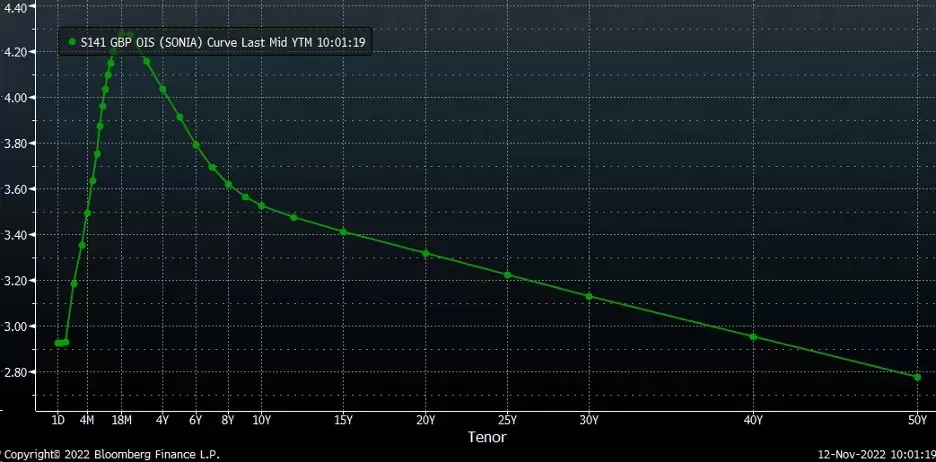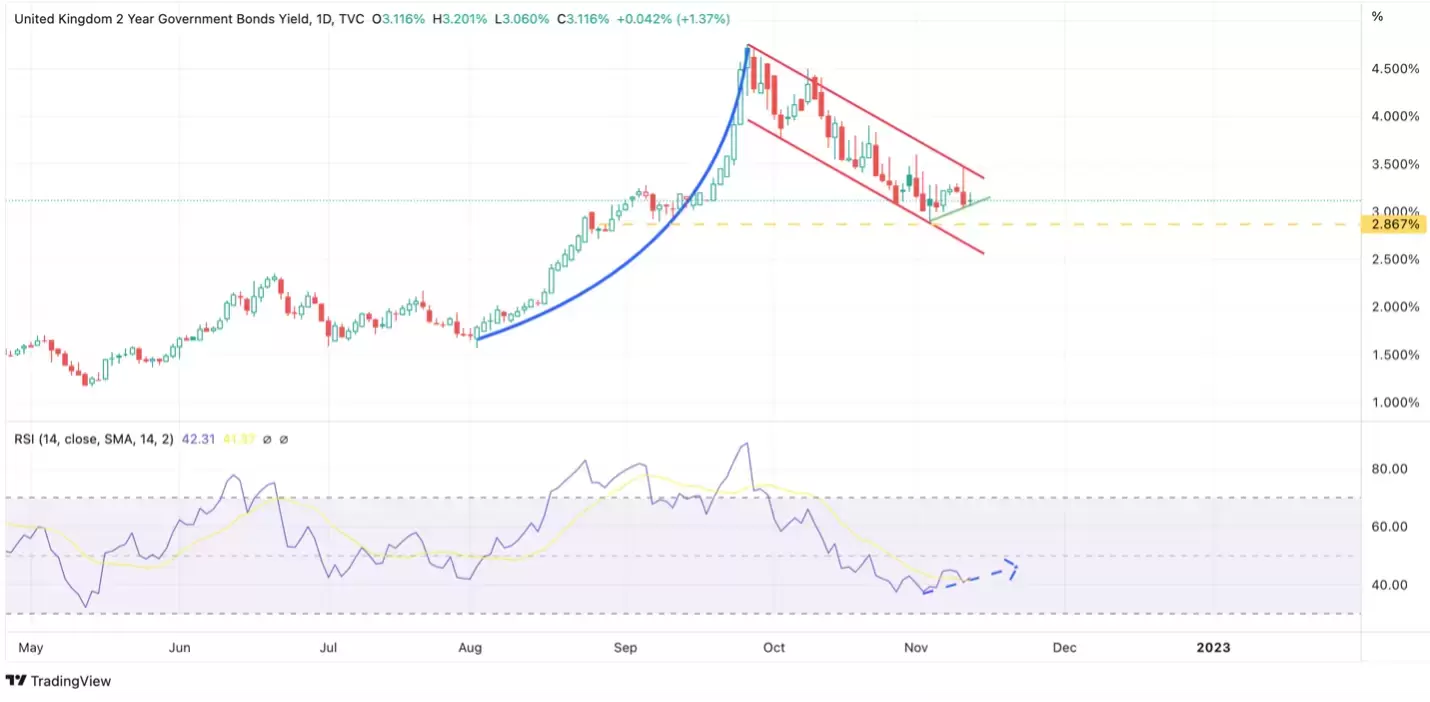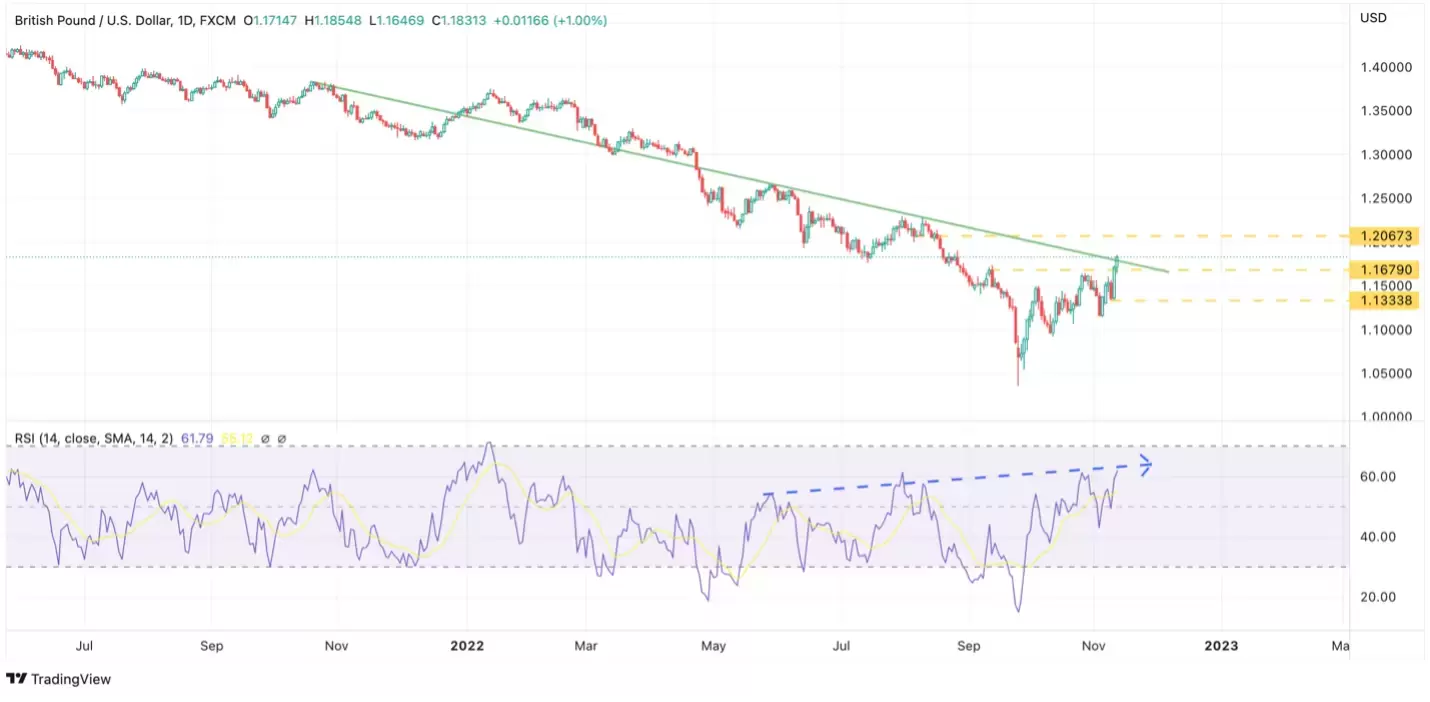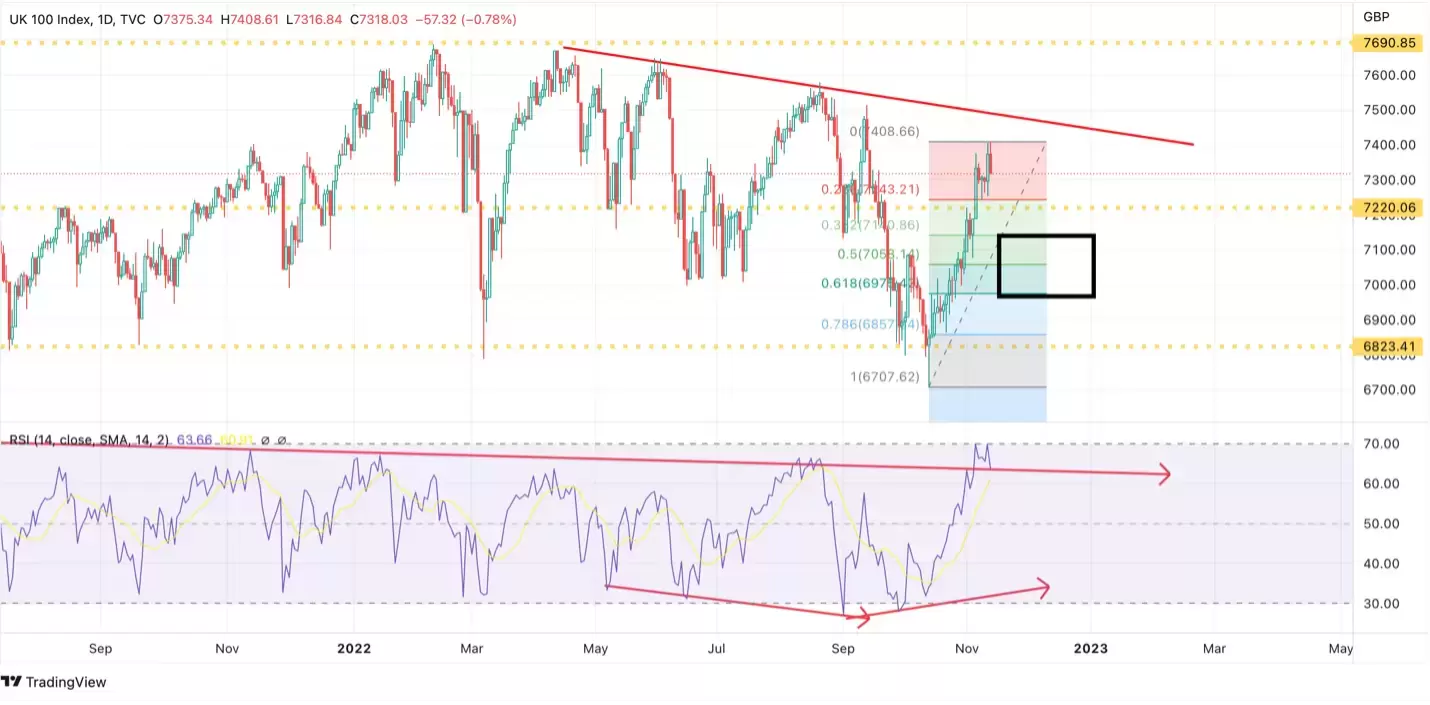
The UK faces another scorching and potentially market-moving consumer price index (CPI) reading on Wednesday. Estimates suggest that headline CPI rose 10.7% in the year to October, up from 10.1% in September. Meanwhile, core CPI is forecast to have increased 6.4%, easing slightly from September's level of 6.5%.
On a month-on-month basis, headline CPI for October is expected to have climbed 1.7%, up from September’s increase of 0.5%.
CPI announcements have become binary events for global markets, as cooler-than-expected data lead to significant short-covering equity market rallies, like the one witnessed in the US this past week. In contrast, a hotter-than-expected reading may lead to currency strengthening, higher rates, and falling equities.
If UK inflation in October exceeded 10.7%, rates could rise further. The two-year gilt yield, currently around 3.1%, has fallen sharply since ex-chancellor Kwasi Kwarteng’s so-called mini-budget sent rates soaring. Markets have calmed since Jeremy Hunt took over as chancellor, and yields have returned to their September levels.

However, the September 2023 overnight swap now sees the Bank of England raising the overnight rate to 4.54%, down from 4.9% ahead of the Bank’s meeting on 3 November. That has resulted in the spread between the overnight swap rate and the two-year gilt rate narrowing further to 1.42% from 1.64% two weeks ago. Nonetheless, that spread over time should continue to contract, especially if the UK’s central bank intends to push interest rates higher, as the market expects.
Are gilt yields set to rise?
Despite falling sharply, the two-year gilt has remained inside its downward-sloping trading channel, as shown in the chart below, and the bull flag remains in place. Additionally, bullish developments suggest that the two-year rate may be getting ready to move higher. The two-year bottomed on 3 November and started to edge higher. Meanwhile, the relative strength index has also increased, suggesting that momentum may gradually shift from bearish to bullish.
However, should the CPI report miss expectations, it is likely to reduce the peak overnight terminal rate that the market is pricing in. This reduction could cause the two-year to fall back to 2.85%.

The pound could gain versus the dollar
If rates rise, the pound could continue to climb as it attempts to break out versus the dollar. Sterling could rise above resistance around $1.17 and push above a downtrend that started in November 2021, potentially moving up to $1.21.
The relative strength index has also been increasing, making a series of higher highs since May, indicating that momentum is directionally bullish for the pound. However, if rates do not rise, the pound could slip versus the dollar and potentially test support at $1.17, possibly falling back to $1.13.

The FTSE may be putting in a short-term top
The FTSE 100 has risen significantly over the past two weeks. To maintain that upward momentum, it needs rates to fall. But a further advance looks limited at this point, with apparent overhead resistance at a downtrend that started in April, which comes just below 7,500.
Additionally, the relative strength index is flashing overbought signs after reaching the 70 level twice since 4 November but failing to push higher despite the equity index making a higher high. This could be the first sign of a bearish divergence forming and a signal that the rally may be approaching a short-term top. A pullback could result in the index falling back to a range of 6,950 to 7,140.

The UK CPI reading for October, due early on 16 November, is likely to be a market-moving event and a winner-takes-all data point. There may be little room for error if the numbers come in hotter or cooler than expected. But it is important to remember that, over the long term, a minor beat or miss on the headline number is unlikely to transform the Bank of England’s monetary policy. Whatever happens, the UK’s battle against inflation seems far from over.
Charts used with the permission of Bloomberg Finance LP. This report contains independent commentary to be used for informational and educational purposes only. Michael Kramer is a member and investment adviser representative with Mott Capital Management. Mr Kramer is not affiliated with this company and does not serve on the board of any related company that issued this stock. All opinions and analyses presented by Michael Kramer in this analysis or market report are solely Michael Kramer's views. Readers should not treat any opinion, viewpoint, or prediction expressed by Michael Kramer as a specific solicitation or recommendation to buy or sell a particular security or follow a particular strategy. Michael Kramer's analyses are based upon information and independent research that he considers reliable, but neither Michael Kramer nor Mott Capital Management guarantees its completeness or accuracy, and it should not be relied upon as such. Michael Kramer is not under any obligation to update or correct any information presented in his analyses. Mr. Kramer's statements, guidance, and opinions are subject to change without notice. Past performance is not indicative of future results. Past performance of an index is not an indication or guarantee of future results. It is not possible to invest directly in an index. Exposure to an asset class represented by an index may be available through investable instruments based on that index. Neither Michael Kramer nor Mott Capital Management guarantees any specific outcome or profit. You should know the real risk of loss in following any strategy or investment commentary presented in this analysis. Strategies or investments discussed may fluctuate in price or value. Investments or strategies mentioned in this analysis may not be suitable for you. This material does not consider your particular investment objectives, financial situation, or needs and is not intended as a recommendation appropriate for you. You must make an independent decision regarding investments or strategies in this analysis. Upon request, the advisor will provide a list of all recommendations made during the past 12 months. Before acting on information in this analysis, you should consider whether it is suitable for your circumstances and strongly consider seeking advice from your own financial or investment adviser to determine the suitability of any investment. Michael Kramer and Mott Capital received compensation for this article.
Disclaimer: CMC Markets is an execution-only service provider. The material (whether or not it states any opinions) is for general information purposes only, and does not take into account your personal circumstances or objectives. Nothing in this material is (or should be considered to be) financial, investment or other advice on which reliance should be placed. No opinion given in the material constitutes a recommendation by CMC Markets or the author that any particular investment, security, transaction or investment strategy is suitable for any specific person. The material has not been prepared in accordance with legal requirements designed to promote the independence of investment research. Although we are not specifically prevented from dealing before providing this material, we do not seek to take advantage of the material prior to its dissemination.























